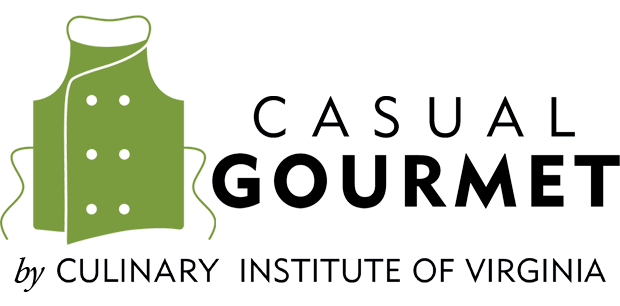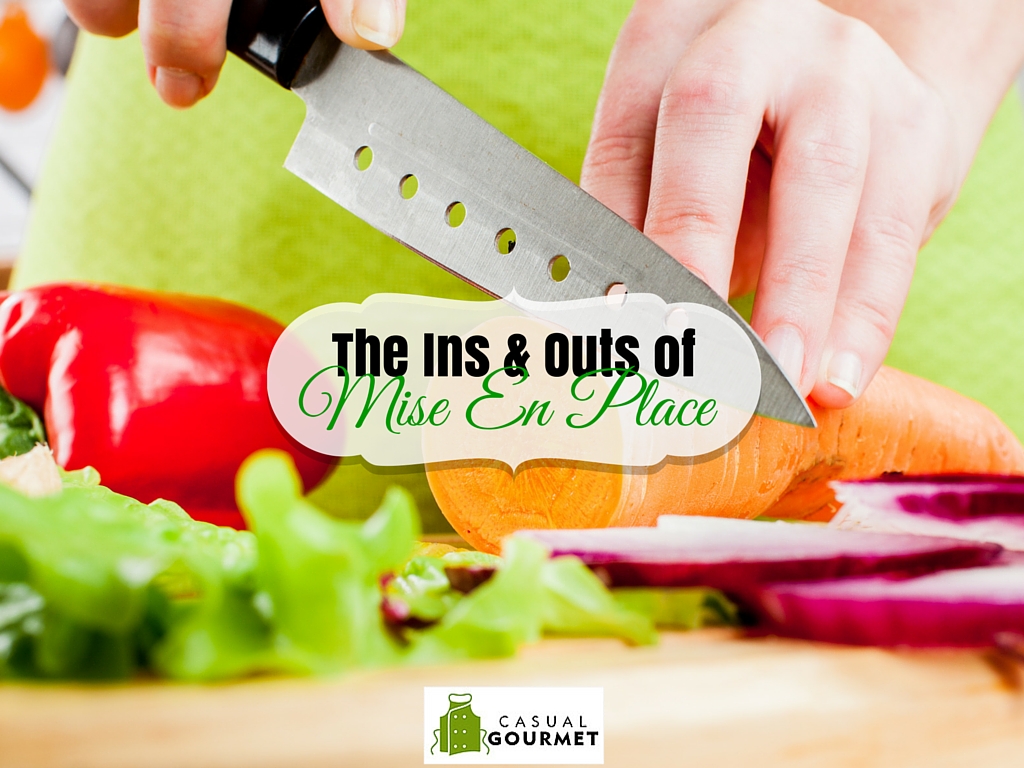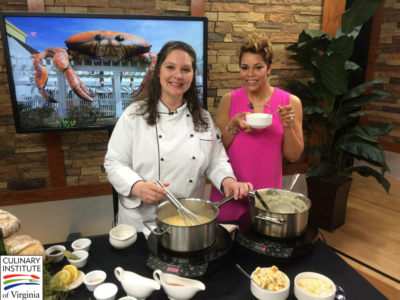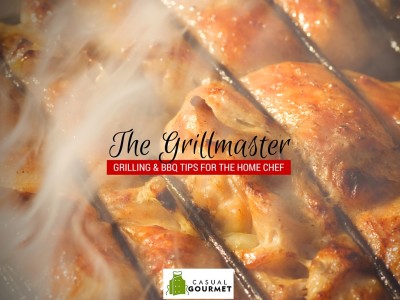The Ins & Outs of Mise En Place: Learn to Organize Like a Gourmet Cook
Practice may make perfect, but preparation makes perfection without breaking a sweat.
No one knows this better than the acclaimed culinary wizards of France. Like many great culinary understandings, the art of mise en place, which means “putting in place,” began in 20th century France. The idea is that a meal is thoughtfully prepared, not simply cooked, by laying out ingredients and necessary tools beforehand. This practice leads to a more carefully executed and artful meal, both in at home cooking and a restaurant.
Mise en place is thought to be codified by Georges Auguste Escoffier, a pioneer in French cuisine in the 20th century. Escoffier was a soldier in the Franco-Prussian war. In the military he gained a high level of respect for rigidity, diligent planning, and organized processes. His outlook and his emphasis on mise en place were at first considered overly fussy. But when patrons and competitors recognized the advanced palette his method created, they were swayed to adopt mise en place in their own kitchens.
What is Mise En Place in Cooking?
Just as a general arranges his soldiers and weaponry before a battle, an athletic coach lines up players and equipment before a game, or a scientist readies his materials before an experiment, the experienced chef knows the advantages to having everything ready to go at a moment’s notice. In a restaurant, for example, ingredients are prepped and tools are readied long before the customers sit down to eat. Mise en place is the secret weapon that professional chefs use to deliver a piping hot, perfectly assembled dish ten minutes after you order it, even though the recipe might take over an hour from start to finish.
In a restaurant, cooks appear hours before opening to ensure successful preparation and mise en place. They will chop vegetables, trim meat, mince garnishes, prepare sauces, and more. Then, each of these freshly prepped products will be arranged in a station for easy assembly into the requested recipe. In addition to the edible materials, tools are brought forth and placed within easy access of the chef’s station. In order to achieve mise en place, chefs study the recipes and daily specials to determine exactly what is needed, then organize these materials in steel bins within arms’ reach of the countertop or grill. Careful organization ensures materials needed toward the end of the recipe are grouped together and so forth.
Without mise en place, even the most talented restaurateur could face a flop. If a chef is busy searching for a sifter to sprinkle powdered sugar across a soufflé, the dessert may fall or cool before it is presented. If an empanada fork is jumbled within a crowded drawer, it can lead to a burnt filling or crust. Mise en place allows the chef to pay careful attention to the meal they are creating. Also, if shaved parmesan is missing from the work station, a hot mess could take place of haute cuisine as escargot burns while the chef scrambles to find a cheese grater.
Why is Mise En Place Important in the Kitchen?
Mise en place may seem a bit fussy for the home chef, but it can take the fuss out of preparing a meal. Consider the difference between a perfectly executed omelet and a burnt, unappetizing mess. Picture cooking in a whirlwind frenzy, where proteins are left to burn and veggies become soft and mushy while you search high and low for every needed tool and ingredient. Now imagine carefully and calmly preparing a meal while relaxing and pondering the exact timing needed to complete each step.
Whether creating an elegant special occasion meal or a casual weekday cookout, mise en place is key to a delicious meal prepared with ease. To execute mise en place in your home, planning is everything. First consider the ingredient list. Does anything need to be chopped, sliced, grilled, or measured? How far in advance can it be prepped? Utilize small or medium ramekins to separate key ingredients and store them until you’re ready to begin. Some brands come with a ceramic lid, but you can just cover each with plastic wrap and place in the refrigerator to store. Next up is the tools. Will you need a garlic press, sifter, spatula, or immersion blender? Locate each item and place them in a large canister on your countertop for ease of use. Now you’re ready to begin!
Learn Mise En Place from a Pro at Casual Gourmet
Mouthwatering aromas waft from copper skillets. From-scratch croissants rise merrily in the oven. Filets sizzle to perfection. Crisp vegetables skirt eye-catching platters. It’s a perfectly executed, delicious meal, prepared from start to finish by you with ease thanks to the practice of mise en place. To learn more about mise en place and other techniques, visit The Casual Gourmet to learn more about our cooking classes.
Great lesson last night! Food for ThoughtPrinciples of cooking with Heat with Chef Douglas Cooperman
Posted by Princess Lipscomb on Wednesday, September 16, 2015
DISCLAIMER – Casual Gourmet makes no claim, warranty, or guarantee as to actual outcomes for past or current attendees. The Casual Gourmet website is published for informational purposes only. Every effort is made to ensure the accuracy of information contained on the CasualGourmet.com domain; however, no warranty of accuracy is made. No contractual rights, either expressed or implied, are created by its content.




